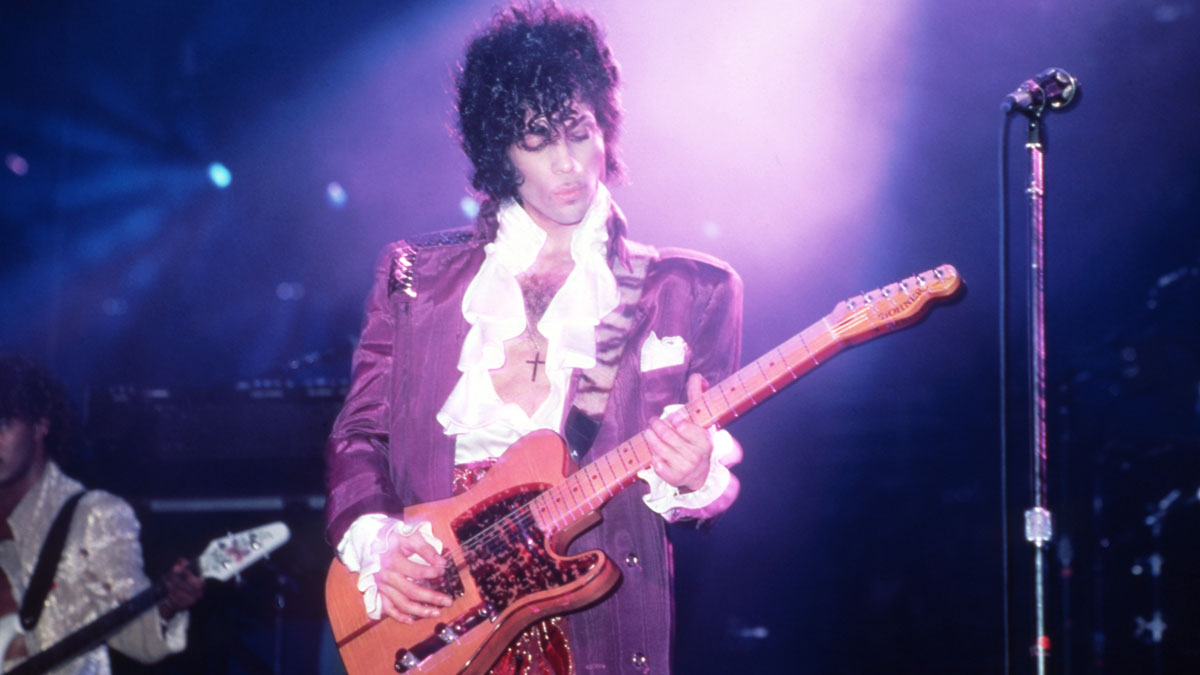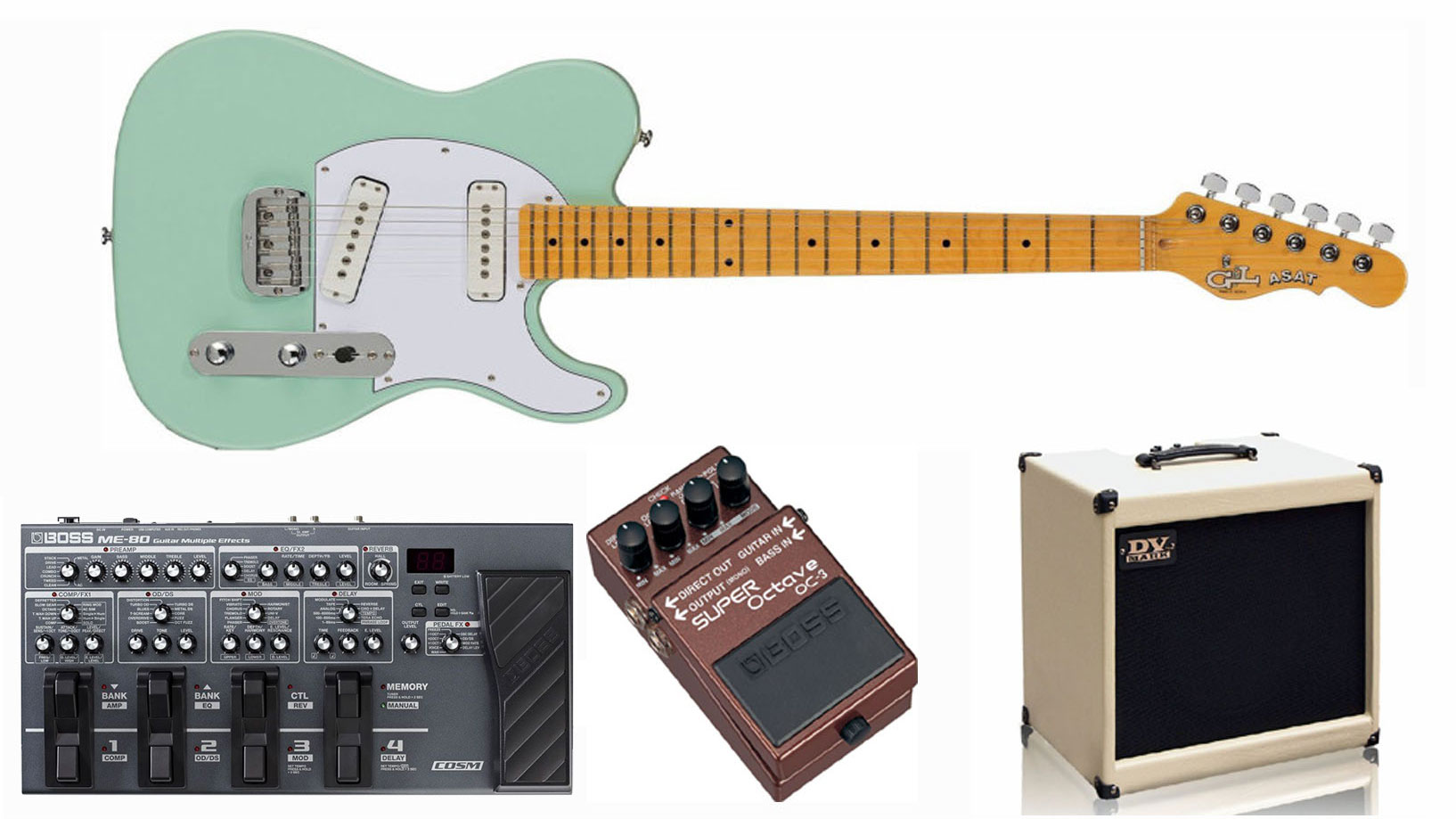The secrets behind Prince's tone on Let's Go Crazy
How The Purple One got those raucous rock sounds on this classic Purple Rain cut

The 1984 film Purple Rain turned Prince into a superstar, although the accompanying album and the strength of the material within also played a big role in his ascension to new heights of fame.
One of the most enduring songs from that album is the opening track, Let’s Go Crazy, which blended heavy electric guitar riffs with new wave synths and drum machines and a dose of funk to deliver a massive hit with irresistible crossover appeal.
Prince recorded the basic tracks for Let’s Go Crazy live with his band the Revolution in an industrial warehouse rehearsal space that was converted into a makeshift recording studio for the sessions.
While the instruments were both miked and recorded direct, there isn’t much separation between instruments, which, combined with a rather dense mix of two guitars, two keyboards, bass, drums and drum machine, makes it somewhat difficult to isolate Prince’s rhythm parts and evaluate his precise guitar tone.
Fortunately, Prince played the song live frequently throughout his career and he even used essentially the same live rig consistently so he could perfectly duplicate his favorite classic sounds.
The core of his rig for this song was a Hohner/H.S. Anderson MadCat Telecaster copy, which varied from a traditional Tele design with its Strat-style single-coil pickups, Strat-style hardtail bridge and maple body. The bridge pickup is also placed closer to the bridge than the bridge pickups on traditional Strat and Tele designs, giving the MadCat a more aggressive treble bite.
Prince relied heavily on Boss pedals for many of his most distinctive guitar tones, played here through a Mesa/Boogie Mark IIB guitar amp set to a clean tone and plugged into a pair of custom Bag End 4x12 cabinets loaded with JBL D120F speakers to maximize headroom and enhance midrange clarity and treble frequencies.
Get The Pick Newsletter
All the latest guitar news, interviews, lessons, reviews, deals and more, direct to your inbox!
Prince’s distorted tone comes from a Boss DS-1 Distortion pedal, and for the main rhythm riffs and the first solo he also used a Boss OC-2 Octaver to provide deeper bass with buzzing, fuzz-like overtones. For the second solo at the song’s climax, he kicks on a Color-sound Wah and uses a Boss BF-2 Flanger at a few key moments for added drama.
Original gear
GUITAR: Late-'70s Hohner/H.S. Anderson MadCat with maple neck, Strat-style pickups and Strat-style bridge (bridge pickup), Volume: 10, Tone: 10
AMP: 1981 Mesa/Boogie Mark IIB (Volume 1: 7 with Pull Bright, Treble: 7, Bass: 4, Middle: 5, Master 1: 8, Presence: 6, Full Power) into two Bag End Q12 4x12 cabinets with JBL D120F speakers
EFFECTS: Colorsound Wah, Boss DS-1 (Tone: 6, Level: 7, Distortion: 9), Boss OC-2 Octaver (Oct 2: 10, Direct Level: 7, Oct 1: 6.5), Boss BF-2 Flanger (Manual: 9, Depth: 9, Rate: 3, Res: 10)
STRINGS/TUNING: GHS Boomers Medium .011-.050/Standard
PICK/SLIDE: Regular celluloid Medium
TONE TIP: Set the ME-80’s OD/DS section to Turbo DS, the Mod section to Flanger and the Pedal FX to Wah. An OC-3 set to classic OC-2 mode can be placed in front of the ME-80.
Get the sound, cheap!

- G&L Tribute ASAT Special
- DV Mark DV Jazz 12
- Boss ME-80
- Boss OC-3 Super Octave
Chris is the co-author of Eruption - Conversations with Eddie Van Halen. He is a 40-year music industry veteran who started at Boardwalk Entertainment (Joan Jett, Night Ranger) and Roland US before becoming a guitar journalist in 1991. He has interviewed more than 600 artists, written more than 1,400 product reviews and contributed to Jeff Beck’s Beck 01: Hot Rods and Rock & Roll and Eric Clapton’s Six String Stories.
“The rest of the world didn't know that the world's greatest guitarist was playing a weekend gig at this place in Chelmsford”: The Aristocrats' Bryan Beller recalls the moment he met Guthrie Govan and formed a new kind of supergroup
Carlos Santana hospitalized following pre-show medical emergency



![[from left] George Harrison with his Gretsch Country Gentleman, Norman Harris of Norman's Rare Guitars holds a gold-top Les Paul, John Fogerty with his legendary 1969 Rickenbacker](https://cdn.mos.cms.futurecdn.net/TuH3nuhn9etqjdn5sy4ntW.jpg)







